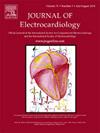定位辅助路径的算法:我们应该信任到什么程度?
IF 1.3
4区 医学
Q3 CARDIAC & CARDIOVASCULAR SYSTEMS
引用次数: 0
摘要
辅助通路定位算法被广泛应用于室性预激患者的导管消融规划。这些算法通常依赖于δ波和QRS复合体的特征来预测AP的位置。然而,诸如解剖变异、年龄、多个ap的存在和患者生物型等因素可能导致不准确。我们报告了一例心室预兴奋但无合并症的患者,其心电图(ECG)显示的AP位置与标准算法预测的完全不同。这种差异导致导管消融策略的改变,通过逆行主动脉入路成功地进行了消融。本文章由计算机程序翻译,如有差异,请以英文原文为准。
Algorithms for locating accessory pathways: How far should we trust?
Algorithms for locating accessory pathways (APs) are widely used in planning catheter ablation for patients with ventricular preexcitation. These algorithms typically rely on characteristics of the delta wave and QRS complex to predict AP location.
However, factors such as anatomical variations, age, the presence of multiple APs, and patient biotype can lead to inaccuracies.
We present the case of a patient with ventricular preexcitation but no comorbidities, whose electrocardiogram (ECG) suggested an AP location entirely different from that predicted by standard algorithms. This discrepancy led to a change in the catheter ablation strategy, which was successfully performed via a retrograde aortic approach.
求助全文
通过发布文献求助,成功后即可免费获取论文全文。
去求助
来源期刊

Journal of electrocardiology
医学-心血管系统
CiteScore
2.70
自引率
7.70%
发文量
152
审稿时长
38 days
期刊介绍:
The Journal of Electrocardiology is devoted exclusively to clinical and experimental studies of the electrical activities of the heart. It seeks to contribute significantly to the accuracy of diagnosis and prognosis and the effective treatment, prevention, or delay of heart disease. Editorial contents include electrocardiography, vectorcardiography, arrhythmias, membrane action potential, cardiac pacing, monitoring defibrillation, instrumentation, drug effects, and computer applications.
 求助内容:
求助内容: 应助结果提醒方式:
应助结果提醒方式:


